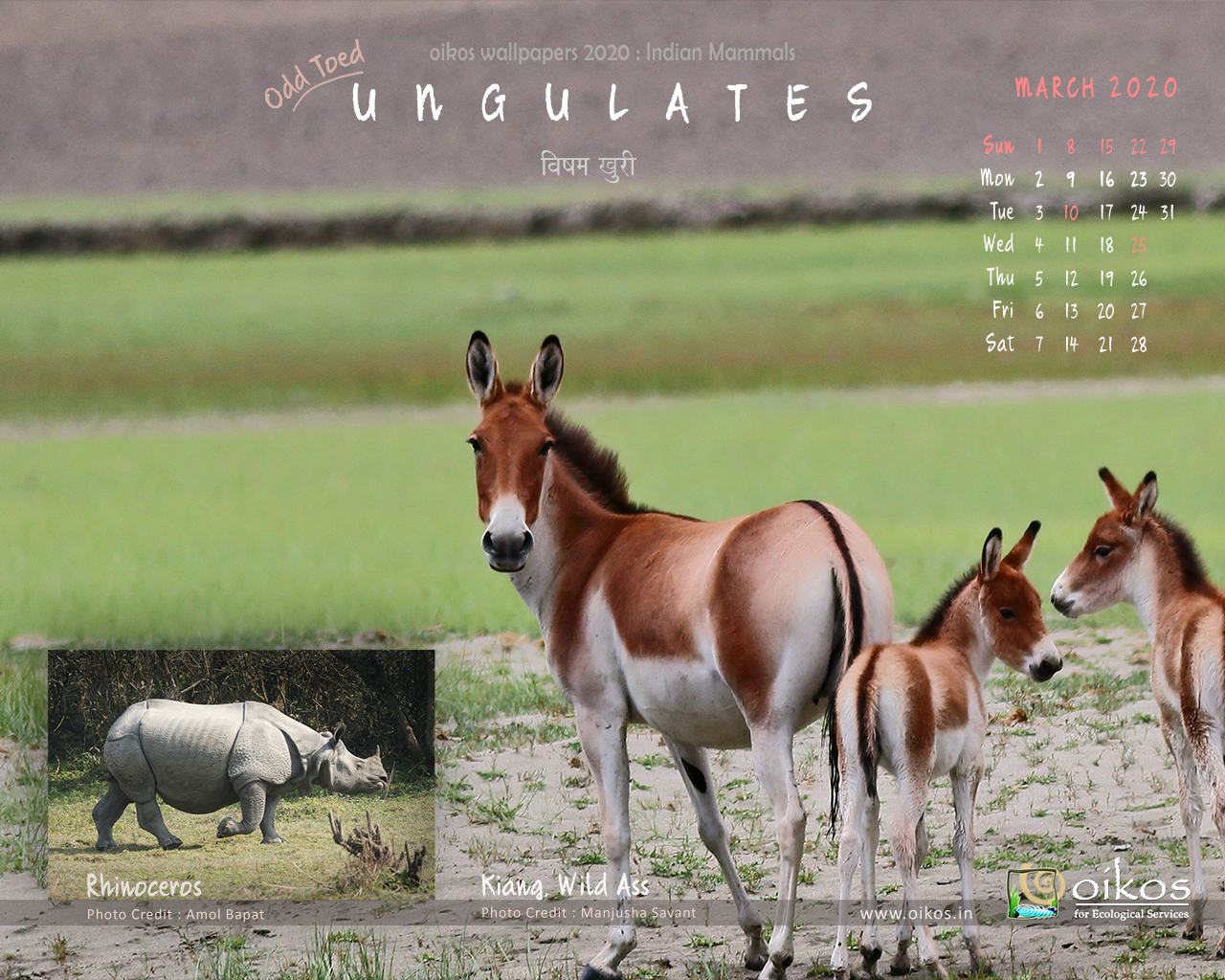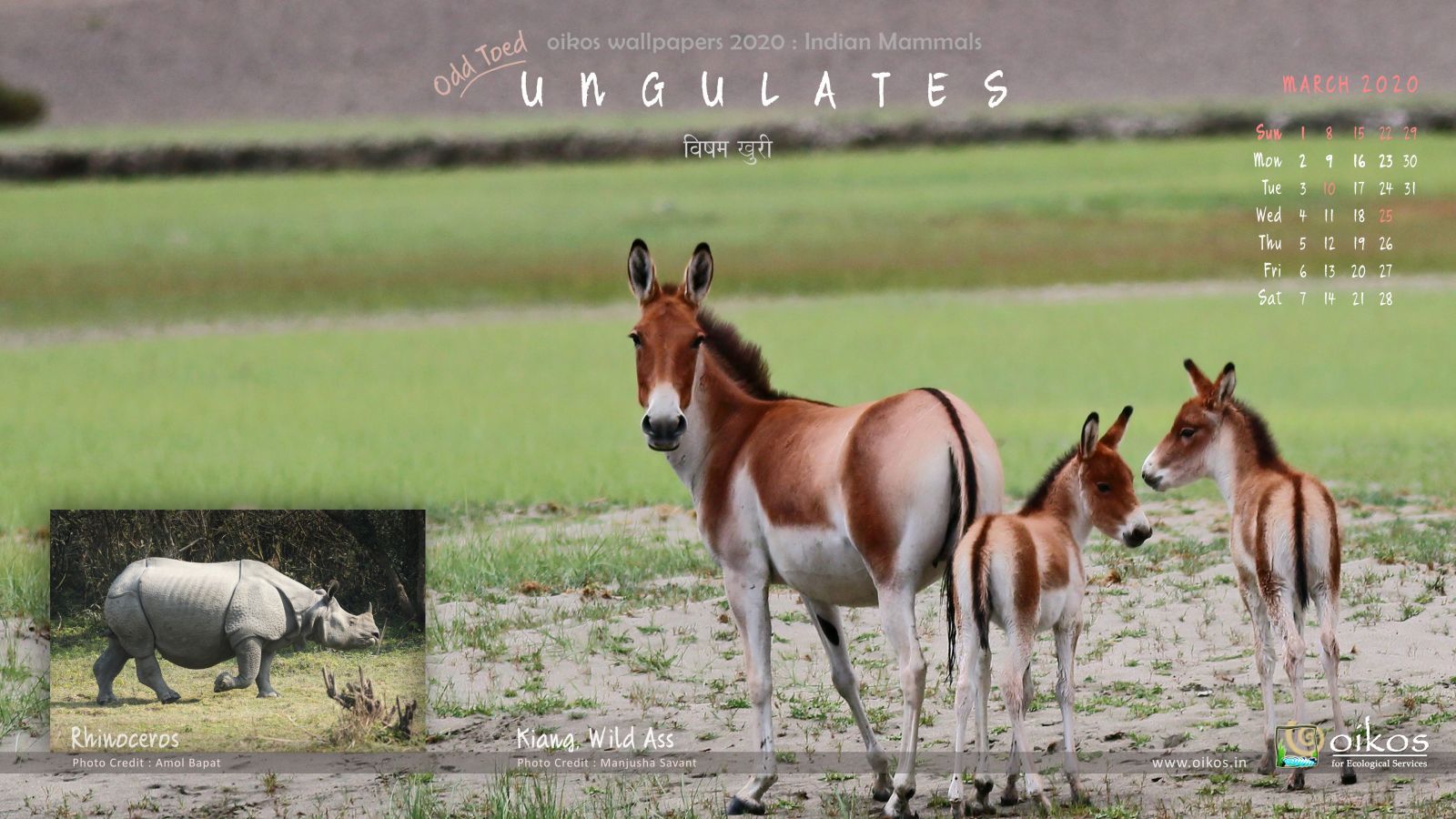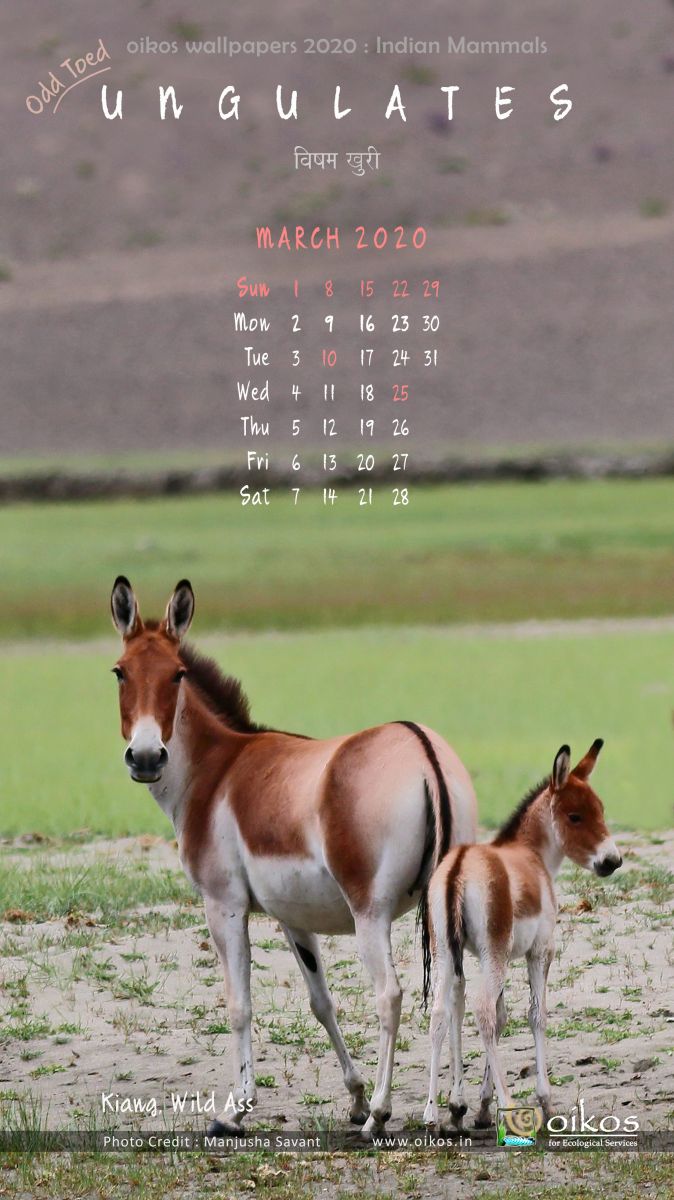Mar - 2020
Dear nature lovers,
Greetings from oikos !
‘Ungulate’ means hoofed mammal (खूर असलेले), hoof = modified nail. Ungulates are further grouped as Even-toed and Odd-toed. This month let's discuss about odd-toed ungulates. There are 18 species of odd-toed ungulates worldwide and India has 3 wild species - The Greater One-horned Rhinoceros, Indian Wild Ass and Tibetan Wild Ass. In addition to these, domestic donkeys & horses are also odd-toed ungulates.
Equids (Family Equidae), the horses, zebras & asses are grazers, turning browsers seasonally, prefer grasses & sedges. They have a single toe enclosed in a hoof, giving them a springy gait & speed with grace & power. They are social animals living in herds sometimes as large as 500 animals in a herd. Both the asses in India are found in deserts.
The Indian Wild Ass (Equus hemionus khur), locally known as Ghudkhar, jangli gadhedo is found in hot desert of Little Rann of Kutch, Greater Rann in Gujarat and eastern Rajasthan. It prefers open salt mudflats, scrublands, grassland, small clumps of grasslands and fringes intermixed with cropland.
The Tibetan Wild Ass (Equus kiang kiang), locally known as Kiang or kyang lives in trans-Himalayan cold deserts of Ladakh lives in high open plateau, hill and valley seasonally migrating from higher altitude pastures to valley bottoms.
Rhinos (Family Rhinocerotidae) : Rhinoceros (Rhinoceros unicornis), is the second largest mammal in India commonly known as Gainda, found mostly in North-east India. It has large sized, three-toed hooves and a single horn made of hair-like substance called keratin, with large skin folds looking like armour having deep slate-grey colour. They are solitary grazing animals in grasslands sometimes browsing on land & aquatic vegetation. Rhinos have peculiar habit of following same paths and using same spot to defecate. Distinct nine populations are found in Terai & Bhabhar tracts of northern India and Brahmaputra river basin in North-East spreading across Assam, West Bengal, Bihar and Uttar Pradesh. It prefers tall alluvial grasslands and riverine forest-grassland mosaics with swampy patches.
Along with habitat destruction, poaching for horns is the highest threat for Rhinos. But there are good efforts taken by forest department, local groups & community based organizations for Rhino conservation. For Wild asses, domestic livestock is biggest threat that competes with them for food and carry diseases; so this needs to be addressed urgently.
Regards,
Ketaki & Manasi
With Team oikos !
Please Note -
This Email is a part of awareness campaign initiated by oikos, Pune. Write to us for your valuable feedback.
oikos have been sending ‘Desktop calendars’ since January ’06 with various themes, which can be downloaded from our website.
If you are not willing or not the correct recipient of this Email, kindly reply this mail with subject 'unsubscribe'.
Thanking you for your precious time.
Spread a word !! Forward to nature lovers !
Click on any of the desired options below to get appropriate image.
Save it to computer and set it as desktop background for your computer monitor.
Oikos for ecological services
Ph. 020-25451875
Web: www.oikos.in




